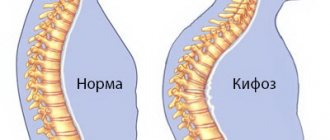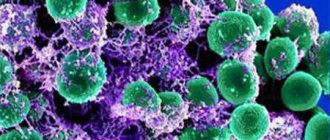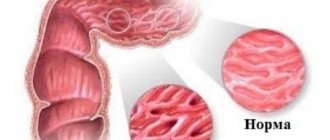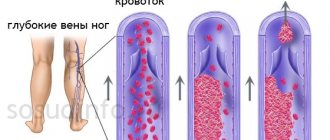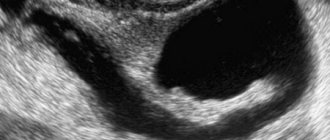What is stage 1 obesity?
Obesity (ICD code 10 - E66) is a condition characterized by excess fat deposits in the body. This disease can be either an independent pathology or a syndrome of another disease.
Adults, adolescents and children are equally susceptible to obesity. You can learn about the treatment of childhood obesity from this article.
If treatment is ignored, the first degree of obesity can progress to other degrees, which we will discuss below.
Obesity levels
Experts distinguish 4 degrees of obesity. To determine the degree of obesity, calculation using BMI is used. In this case, gender, height, age and body mass index are taken into account:
- obesity 1st degree - increase in normal weight by 20-29 percent;
- obesity 2nd degree - increase in normal weight by 39-49 percent;
- obesity 3rd degree - body weight is 59-99 percent higher than the permissible norm;
- obesity 4 degrees - an increase in normal weight by 100 percent or more.
Degrees of obesity in children
Each person has the opportunity to calculate their ideal weight and begin to take measures to reduce their actual weight in order to avoid the appearance of symptoms of diabetes in the future.
But, however, it is worth considering that these calculation formulas are not very suitable for children and athletes. This is due to different proportions in children and the predominance of muscle mass in athletes and bodybuilders. In this section, we will consider the problem of diagnosing excess weight in small representatives of humanity.
Unfortunately, I note the fact that the incidence of obesity among children is steadily increasing every year. In Russia, it has not yet become an epidemic, but in developed countries, doctors and scientists are literally shouting that overweight children are approaching a critical level.
If Russians continue to adhere to Western standards of living and instill their values in their children, then in ten years we will also face a similar fate (see photo above). Take care of your children! After all, excess weight means not only chubby cheeks and soft, round shapes, but also a host of concomitant pathologies.
Children, just like adults, can become obese in the first, second, and even third degree. This is especially true for adolescents and children in the first years of life. Because it is during this period that active division of adipose tissue cells occurs.
When can a child be considered to already have a weight problem?
If you suspect a child has a weight disorder, you can quickly and easily calculate BMI, which correlates with fat mass in both adults and children, as recommended by WHO. I wrote about this formula at the beginning of the article. The evaluation of the calculation results is similar, namely:
- overweight corresponds to a BMI of 25 to 30
- Class 1 obesity corresponds to a BMI of 30 to 35
- Class 2 obesity corresponds to a BMI from 35 to 40
- Class 3 obesity corresponds to a BMI of more than 40
Degrees of obesity in children in tables
But this method is very rough and does not take into account children's parameters. Pediatric endocrinologists use a more accurate method - the use of percentile or centile tables, which compare the weight, height, gender and age of children. Agree that this method is more individual. A child’s body weight is considered overweight when it is between the 85th and 95th centile, and obesity begins at the 95th centile. Modern centile tables were recently created in 2006 based on the Multifocus Growth Reference Study (MGRS). They are created in each country, taking into account national characteristics. They use a standard deviation score (SDS). WHO uses standard deviations –1, –2, –3 SDS, median and +1, +2, +3 SDS. Taking into account WHO recommendations, obesity in children and adolescents should be defined as +2.0 SDS BMI, and overweight from +1.0 to +2.0 SDS BMI. Below I present a photo of the official table for boys from 2 to 5 years old and show how to use it correctly (click on the picture to make it larger). Then you can calculate for all ages and for your child.
So, in the first column you see age - year/month, in the second column you see age in months, we skip the next three. Let's look at the last 7 columns. The median column means the average BMI for this age and is considered normal if your indicator fits into the indicators between the -1SD and 1SD column. If the BMI is from 1SD to 2SD, then this indicates that the child is overweight. If more than 2SD – obesity. It is also available not in the form of tables, but in the form of graphs. Here, whatever is more convenient for you. The graph looks like this. I took as an example the BMI for boys from 5 to 19 years old (picture clickable)
Here you see 5 lines that divide the chart into 6 intervals. The norm is read by BMI, which falls between the yellow lines. Age is located horizontally, and BMI is located vertically. I hope you remember how to calculate it. As you can see, this chart does not indicate SD, but the centiles that I talked about at the beginning. In this way, the old and modern designation are combined. .
Causes of stage 1 obesity
There are few reasons for being overweight. Obesity of the 1st degree in a woman is observed when her weight exceeds the norm by 25-30 percent. This is due to:
- hereditary predisposition to obesity;
- metabolic disorders;
- wrong lifestyle.
The main cause of first-degree obesity in women is a lifestyle disorder due to poor nutrition, a sedentary lifestyle and reluctance to exercise.
Obesity of the 1st degree does not bypass men either. In this case, the main reasons for the development of pathology are:
- inactive lifestyle;
- sedentary work;
- depression;
- unbalanced and unhealthy diet;
- genetic predisposition;
- stress.
Clinical picture of the first stage of obesity
The main symptom of stage 1 obesity is shortness of breath, which occurs when climbing stairs, walking quickly, or bending over. Additional symptoms include:
- the appearance of complexes;
- stress and depression;
- feeling depressed and upset;
- low self-esteem.
If at this stage a person ignores treatment, then in the future this leads to the following consequences:
- diabetes;
- menstrual irregularities;
- hyperinsulinemia;
- slowdown in ovarian function.
As a rule, with the initial degree of obesity, the pancreas, thyroid and parathyroid glands, adrenal glands, and gonads suffer.
Classification of types of obesity
All the information presented above becomes useless without understanding the problem. Types of obesity have their own classification. It wouldn’t hurt to read it in detail to know exactly what we’re talking about.
In women (gynoid obesity)
In other words, this type of disease is called a “pear-shaped figure.” This means that excess excess fat inevitably accumulates in the lower body. That is, the main “reserves” are collected in the lower abdomen, on the hips, legs and buttocks.
Such excess accumulation of fat is least dangerous for women, since it does not imply any special hormonal disruptions. At the same time, lipids accumulate mainly immediately under the skin, therefore they do not pose a danger to the functioning of internal organs until their quantity is critical. Having this type of disease, many women, and even men, agree to undergo liposuction (fat removal), which usually has a positive prognosis.
In men (abdominal obesity)
This type occurs most often in men, but women also suffer from it. With this disease, all fat reserves accumulate mainly in the upper part of the body - on the stomach, shoulders, arms, chest, back, and axillary areas. This is a rather dangerous type of disease, since the main fat will grow just in the area where the internal organs are located.
As a result, consequences may arise, for example, fatty liver, as well as other organs. Moreover, a threat can exist even with a slight excess of mass. An interesting question is at what degree of obesity men are not taken into the army. There is a very specific answer to this - only grade 3 will be a serious reason to “refuse” to serve. However, it’s clearly not possible to call this a suitable option; it’s better to get a higher education.
Waist and hip circumference
It is not difficult to calculate this type of obesity. Ideally, a man’s waist should be no more than 80 centimeters in circumference, and a woman’s – no more than 90. However, this is not enough; if a guy’s waist-to-hip ratio is more than one or 0.8 for a girl, then this is a serious cause for concern and a visit to the doctor in the very near future.
Types of obesity
There are several types of obesity that many people do not pay attention to. Experts divide them into types based on the reasons for their appearance:
- abdominal;
- nutritional;
- gynoid.
Below we will talk in more detail about each type of obesity of the 1st degree.
Abdominal
Abdominal obesity is the excess accumulation of fatty tissue in the abdomen and upper torso. This type of pathology is also called visceral, android or upper obesity. The figure of a person with this type of obesity resembles an apple.
This type of obesity is dangerous for human life, as it increases the risk of developing a heart attack, diabetes, oncology, and stroke. People with this form of obesity are not able to tolerate physical activity normally, as the heart has to work in extreme conditions. Typically, abdominal obesity occurs in men.
Nutritional
Alimentary obesity (also called primary, nutritional-constitutional and exogenous-constitutional) develops as a result of poor nutrition. In medicine, this pathology is associated with metabolic disorders. Its appearance is also influenced by a sedentary lifestyle, diseases of internal organs and systems (quite rare).
We can say that the person himself is to blame for the fact that he developed this form of obesity. There is only one way out of this situation - normalization of nutrition and an active lifestyle.
Gynoid
This form of pathology is a typical female disease. The disease is accompanied by fat deposits on the abdomen, buttocks and thighs. The female figure takes on the shape of a pear.
Types of obesity: understanding the initial data
This is commonly referred to as excessive accumulation of lipids in adipose tissue. This phenomenon leads to a variety of complications, but primarily to excess body weight. This disease appears when there is a so-called positive energy balance. This means that the amount of energy used (burnt) is several times lower than the calories (food) received can provide.
Obesity is not a superficial problem that can be solved by simply exercising or limiting what you eat. Such steps can lead to complications such as anorexia, compulsive overeating or bulimia. This is a chronic disease that requires long-term, complex therapy. You will have to take steps to help you steadily lose weight, thereby reducing the risk of various concomitant diseases.
Any obesity can be divided into separate types and types: according to the location of fat deposits, according to the causes and mechanisms of occurrence and development.
Mechanism
There are two main mechanisms for the occurrence of excess weight.
- Hypertrophic.
- Hyperplastic.
In the first case, weight increases due to an increase in the size of fat cells (adipocytes), as well as the amount of lipids in them. In the second, obesity may appear due to a significant increase in the number of adipocytes. The hypertrophic type is more common, and in most cases women suffer from it. Therefore, it is they who most often experience the phenomenon of cellulite.
Alimentary (primary) obesity
Scientists also call this disease exogenous constitutional obesity. There is a lot of material about it on our website; it wouldn’t hurt to study it in more detail. In a nutshell, most often this type of excess weight occurs as a result of systematic overeating, as well as decreased physical activity. At the same time, the body receives either carbohydrates, which are processed into lipids, or the fats themselves. They are deposited in ugly folds on the sides and hips.
Additional causes of nutritional obesity may be genetic (hereditary) predisposition, as well as eating disorders. This includes nightly raids on the refrigerator, hidden food consumption, and the inability to control what is eaten.
Secondary obesity
There is a special attitude towards this type of disease, but let’s take it in order. For simplicity, doctors have divided the disease into three main subtypes.
Mental
Excess weight occurs due to a person’s inability to control himself, his diet, diet and daily routine. This category can also include excess weight, which is caused by long-term use of various antipsychotics or psychotropic drugs.
Cerebral
This type of disease can appear in those patients who have disorders in the functioning of the brain (food centers) and the central nervous system. The following reasons can directly influence the increase in excess weight.
- Traumatic brain injuries.
- Brain tumors of various etiologies.
- Encephalitis and other infectious diseases.
- Postoperative syndrome.
- “Empty sella” syndrome (intussusception of the subarachnoid space).
Endocrine
If the production of certain hormones is disrupted, as well as hormonal imbalance, an excess of fat deposits can also occur. Such obesity is usually divided into several additional subcategories.
- Adrenal. Often it indicates the presence of a tumor of the adrenal cortex, which is engaged in the production of the hormone cortisol.
- Pituitary. Any kind of damage to the ventromedial hypothalamus leads to obesity of the hypothalamic type.
- Menopausal. Occurs in women during menopause.
- Hypothyroid. It can develop due to a deficiency of the thyroid hormones triiodothyronine and thyroxine, which are usually produced by the thyroid gland.
Against the background of the latter type, significant, serious inhibition of all metabolic processes can develop. Metabolism is reduced to a minimum, so fat accumulation occurs even faster. It happens that several reasons are intertwined, then it can be difficult to find out where the problem came from, as well as to choose the appropriate therapy.
Treatment of obesity 1st degree
First-degree obesity is treated with diet and exercise. In some cases, the specialist additionally prescribes Charcot showers and water aerobics classes.
At first you will find it difficult to exercise. But don’t despair, pull yourself together and remember, only you can improve your health. If your health allows you, you can start with short runs in the morning. When returning from work or shopping, take the stairs and forget about the elevator. Take tips on how to get your body in order at home.
If none of this works, try finding simple video courses with sports exercises. If you do them regularly, you will notice improvements in your figure and mood in a short time.
Causes
Obesity is caused by internal and external factors - overeating, physical inactivity, endocrine disorders, stress, depression, genetic mutations, hereditary predisposition.
A key role in the development of obesity is played by disruption of the metabolism of white adipose tissue. It is formed by adipocytes, which increase in obesity due to the accumulation of excess amounts of triacylglycerol. Two processes take place in adipose tissue: adipogenesis (the formation of fat cells from preadipocytes) and lipolysis (the breakdown of triacylglycerol into fatty acids). Lipolysis products enter the circulatory system and are consumed as energy substrates. Normally, in white adipose tissue, both biochemical processes are in balance. When the balance is disturbed as a result of a decrease in the rate of lipolysis, obesity occurs.
Imbalance is possible under the influence of various factors, which include those presented below.
- Impaired production of lipolytic enzymes involved in the breakdown of triacylglycerol.
- Deficiency of the hormone adiponectin, which is produced by white adipose tissue cells and which is involved in the regulation of glucose levels and the breakdown of fatty acids.
- Low levels of the amino acid peptide ghrelin, which is secreted in the stomach and proximal small intestine. It increases appetite, enhances glucose oxidation and lipogenesis. With a lack of ghrelin, active accumulation of lipids occurs in visceral fat depots.
- Endocrine disorders - increased production of lipase and insulin, lack of thyroid hormones.
- Disorders of the pituitary gland, due to which there is a low level of growth hormone and increased production of adrenocorticotropic hormone. Due to the excess of the latter, the adrenal cortex produces more cortisol, which increases the concentration of sugar in the blood and inhibits the breakdown of triacylglycerol.
- The growth of adipose tissue is also influenced by sex steroids, somatomedin, and catecholamines. Therefore, changes in hormonal balance always affect body weight.
Diet for obesity 1st degree
The diet for the initial stage of obesity consists of eating foods that are necessary for the proper functioning of the body. The amount of protein in the daily diet, as a rule, remains the same or increases slightly, at the rate of 1 g of protein per 1 kg of body weight. But the amount of fats and carbohydrates must be significantly reduced.
The following is completely excluded from the diet:
- granulated sugar;
- honey;
- smoked meats;
- sweet fruits and berries;
- ice cream;
- strong broths;
- carbonated drinks;
- alcoholic drinks;
- canned food;
- sauces;
- pickles;
- confectionery and flour products.
It is necessary to minimize the consumption of bread, semolina, rice, potatoes, and pasta.
Allowed carbohydrates:
- vegetables;
- sour berries and fruits;
- legumes;
- whole grain cereals.
Among sugar substitutes, saccharin and sweets are allowed. Pure still water can be drunk in any quantity, but not during meals. Drink water half an hour before and after meals - this is a kind of drinking diet that will help you lose weight.
Menu for the week
Below is a menu for class 1 obesity for a week. Follow it strictly, and within a week you will notice how your weight has become lower and your health has improved.
First day:
- breakfast - coffee with milk, meat salad, bran bread;
- lunch - unsalted vegetable soup, apple compote without sugar, water (90 minutes after eating);
- dinner - boiled potatoes, rosehip broth, marinated fish.
Second day:
- breakfast - boiled meat, coffee with milk, vinaigrette;
- lunch - cherry compote without sugar, vegetable cabbage rolls, stewed beets;
- dinner - 50 g of cheese, meat okroshka, still water an hour and a half after eating.
The third day:
- breakfast - omelet, vegetable salad dressed with vegetable oil, coffee with milk;
- lunch - tomato juice, vegetable side dish, still water;
- dinner - boiled fish, still water, rosehip decoction.
Fourth day:
- breakfast - beetroot puree, 50 g of cheese, still water an hour and a half after eating;
- lunch - stewed beets, green tea without sugar, beef stroganoff;
- dinner - vegetable cabbage rolls, rosehip broth, an hour and a half after eating, water without gases.
Fifth day:
- breakfast - unsweetened green tea, carrot puree, still water 90 minutes after eating;
- lunch - meat salad, bran bread, water without gas an hour and a half after eating;
- dinner - unsweetened green tea, beef stroganoff, stewed beets.
Sixth day:
- breakfast - peach and mango salad, unsweetened green tea and a small muffin;
- lunch - cabbage salad, vegetable soup, still water;
- dinner - green tea, pumpkin and cucumber salad, rose hip decoction.
Seventh day:
- breakfast - coffee with milk, some boiled meat, 50 g of buckwheat;
- lunch - green tea, borscht with mushrooms;
- dinner - 100 g of rice porridge, cottage cheese casserole.
Morbid obesity. Diagnosis of obesity, BMI
The degree of overweight and obesity is currently calculated using the so-called BMI (body mass index). To calculate BMI, you need to apply a formula whose numerator is body weight in kg, and the denominator is a person’s height in meters squared.
A normal BMI is considered to be between 18.5 and 24.9. The figure reflecting excess body weight will be in the range of 25-29.9.
An index of more than 30 already indicates obesity of varying degrees. A BMI over 40 means morbid obesity. Obesity is also considered morbid if a BMI is more than 35, if the patient already has diseases and complications caused by excess weight (obesity).
In addition to calculating BMI, in practice other methods are also used to determine the degree of obesity (waist, hips). There are situations when calculating BMI is inappropriate because it does not reflect the true ratio of body fat. For example, BMI is not used in athletes (a significant proportion of muscle tissue), pregnant women, and children (there are special formulas for assessing physical development for each age).
The overall risk of death of patients with morbid obesity is ten times higher than that of people with normal body weight, so morbid obesity has long been not only a medical problem. Morbid obesity is also a social phenomenon, a problem that is extremely difficult to solve using medical methods alone.
Recently, the proportion of patients with obesity, including morbid obesity, has been growing all over the world. Let's list the main causes of obesity.
Reviews
Marina, 26 years old
Several years ago, doctors diagnosed me with stage 1 obesity. At first I didn’t know what to do, but then I decided to pull myself together. I changed my diet and started moving more. After about six months, my weight dropped and my obesity went away.
Svetlana, 36 years old
I have a sedentary job, so I have always had problems with excess weight. Some time ago I began to feel shortness of breath when climbing stairs or walking quickly. I went to the doctor and was diagnosed with the initial stages of obesity. The specialist advised to move more, eat less flour products and follow a strict diet. You know, the diet didn’t really help me, but exercise gave results, I lost weight, and my shortness of breath disappeared.
Kirill, 42 years old
All my relatives were overweight. In my youth, I weighed 136 kg with a height of 185, but I felt normal. But about 5 years ago I felt a deterioration in my health, shortness of breath appeared, and it was difficult to walk. Only from the doctor did I find out that I was already in the first stage of obesity. To lose weight, I started going to the pool, switched to proper nutrition, at one time I even followed a diet of minus 10 kg in 10 days. The result was, I lost weight, my health problems disappeared.
Diagnostics
Since the problem of excess weight affected humanity, doctors have been looking for ways to determine the degree of obesity. A variety of formulas were invented to help determine a person’s ideal weight.
And from this ideal, calculate the degree of obesity. Some of the most popular formulas are the following:
- height in cm – 100 = ideal weight in kg
The difference between the existing weight and the ideal weight should not be more or less than 10. This is one of the oldest methods, but not the most reliable.
- Broca's formula
A more advanced version of the first method. In this option, an adjustment is made depending on height. Height 155-165 cm - the number 100 is subtracted, height 165-175 cm - 105 is subtracted, and above and up to 185 cm 110 is subtracted.
- Bornhardt formula
A very convenient way to calculate the ideal weight for each individual person depending on their body structure. Divide chest volume in cm by 240 and multiply by height in cm = ideal weight.
To increase the accuracy of diagnosing the degree of obesity, special tables are created, since it can depend on many factors, which include:
- Ideal weight index
- Floor
- Age
- Body structure constitution.
Instrumental studies of obesity
Among the instrumental studies used in the diagnosis of obesity:
CT (computed tomography)
It is a type of x-ray examination. Radiography itself in its classical form is not very informative when diagnosing obesity. It can only be used with contrast to diagnose possible diseases of the gastrointestinal tract in obesity. CT allows you to obtain a series of images of a given area in the form of cross sections. Using CT, you can evaluate not only the thickness of the subcutaneous layer, but also the degree of expression of internal (visceral fat), as well as the pathology of internal organs.
MRI (magnetic resonance imaging, nuclear magnetic resonance)
It is more accurate than CT. MRI is based on recording changes in the physical properties of atomic nuclei under the influence of an external magnetic field.
Densitometry
This method is based on the absorption of X-ray energy by tissues with different densities. Allows you to determine the amount of adipose tissue, as well as identify osteoporosis (decreased bone density), which is often observed in obesity.
Ultrasound
During an ultrasound examination, it is possible to assess the severity of the subcutaneous layer, as well as diagnose structural changes in internal organs (heart, liver, kidneys, pancreas) in obesity.
Impedancemetry
This method is based on measuring the bioelectrical resistance (impedance) of various tissues when a weak electric current passes through them. Due to its physical properties, adipose tissue has maximum resistance; electric current takes longer to pass through it than other tissues, which is reflected in the results obtained.
These are just the basic methods for diagnosing obesity. As instrumental and laboratory equipment improves, the range of diagnostic studies will expand. Of course, on the basis of only one study, even the most modern one, it is impossible to fully judge the nature of the course of this pathology and its complications. Everything must be assessed in its entirety. This cannot be done by one specialist alone. And therefore, doctors of many specialties - endocrinologists, cardiologists, laboratory assistants, specialists in functional diagnostics - should participate in the diagnosis and subsequent treatment of obesity.
Complications of obesity
In addition to the psychological problems that obesity leads to, overweight people may suffer from the following diseases:
- diabetes;
- stroke;
- heart failure;
- cirrhosis of the liver;
- cholelithiasis;
- sleep apnea syndrome;
- arthritis;
- arthrosis;
- polycystic ovary syndrome;
- decreased libido;
- menstruation disorder.
This is not the entire list of complications that obesity provokes. Obesity is the cause of cancer: breast, uterine and ovarian cancer in women, prostate cancer in men. In addition, obesity increases the risk of sudden death.
According to statistics, the mortality rate among obese people aged 15-70 years is three times higher than among people with normal weight.
Symptoms
At the initial stage of obesity, the first sign of metabolic disorders is shortness of breath. As fat accumulates, performance decreases, mood deteriorates, and emotional disorders and complexes appear.
Women often get nervous if it’s difficult to find fashionable items that fit their figure in a boutique: tight dresses emphasize a blurred waist and full hips. The more such situations, the higher the risk of developing depression, which you again want to overcome with the active consumption of chocolate, sweets, and cakes. Excess simple carbohydrates accelerates the accumulation of fat, resulting in a vicious circle.
Only specialist help, perseverance and the right attitude will help you cope with the problem. You should not wait until your BMI reaches critical values and your waistline will disappear altogether: it is important to contact specialized specialists in a timely manner.
Effective treatments
Important elements of therapy to combat extra pounds:
- low-calorie and low-carbohydrate diet for obesity,
- exercise in the gym with a trainer to avoid overload. Water aerobics is useful, swimming provides an optimal load on the muscles,
- massage, Charcot's shower (in the absence of varicose veins) give a good effect,
- normalization of psycho-emotional state,
- communicating with women who are losing weight, searching for like-minded people who follow a healthy lifestyle,
- daily walks of at least 2 km,
- review of diet and daily routine. You need to eat by the hour, don’t skip an afternoon snack or breakfast,
- getting two liters of fluid during the day,
- refusal to eat shortly before bedtime and snacks,
- switching to healthy foods: buns, fast food, sweet soda are of little use,
- daily consumption of a teaspoon of flaxseed or olive oil in the morning to normalize metabolism and hormonal levels,
- more raw vegetables and unsweetened fruits,
- be sure to replenish protein reserves, get lean meat, chicken and turkey fillet, low-fat cottage cheese, kefir, sugar-free yogurt, legumes,
- healthy sea fish, seaweed, seafood,
- Be sure to eat whole grains and bran,
- exclude semolina porridge, white rice and pastries from the diet.
Therapy tactics, in addition to diet, include the following measures:
- morning work-out;
- daily walks;
- aerobic exercise on a treadmill, exercise bike, elliptical;
- swimming;
- aqua aerobics;
- drug treatment;
- manual and underwater massage;
- Charcot and circular shower;
- healthy sleep of at least 8 hours;
- complex of therapeutic gymnastics.
Regular bowel cleansing, which is performed in a medical facility, helps cure obesity at the initial stage. Endocrinologists prescribe medications with sibutramine to absorb fat and reduce appetite:
- Goldline;
- Slymia;
- Meridia;
- Reduxin.
An important stage in the fight against excess weight is normalizing nutrition. Diet therapy for stage 1 disease follows the following rules:
- daily calorie content – 1200 kcal;
- consumption of foods with a low glycemic index;
- fractional meals (6 times a day);
- use of plant fiber;
- daily salt intake – 4 grams;
- exclusion of sugar, sweets, flour products from the diet;
- preference for foods with fast carbohydrates (cereals, legumes).
Nutrition for grade 1 obesity should be organized following the principles:
- limit fatty and fried foods;
- reduce portion sizes;
- exclude baked goods, alcohol, marinades and spices;
- eat your last meal 3 hours before going to bed;
- remove sweet carbonated water, potatoes, canned food from the diet;
- carry out fasting days weekly;
- drink up to 1.5 liters of water per day;
- eat fruits, vegetables, dairy products, vegetable oil, herbs.
Therapeutic nutrition for obesity
You can lose weight at any stage of obesity if you show willpower and develop a gradual weight loss plan. The principles of treating female obesity of any degree are based on well-known tools:
- Balanced diet.
- Physical activity allows you to burn excess fat and turn it into energy.
- Treatment with pharmaceuticals, if necessary.
- The use of traditional medicine.
The difference between hypothalamic obesity
Hypothalamic obesity is characterized by a rapid increase in body weight with a characteristic deposition of fat mainly in the abdomen, thighs and buttocks. Other manifestations of this type of obesity include:
- increased appetite (mainly in the evening);
- thirst and hunger at night;
- white stretch marks (stretch marks on the skin);
- dry skin.
Women are prone to the development of hirsutism and infertility with characteristic menstrual irregularities. An additional symptom for men will be impaired potency. In addition, neurological dysfunctions such as headache, insomnia, hypertension, sweating and other autonomic disorders may occur.
Second
When a man over 25 years of age has a body mass index of 35–40, this is already the second stage of obesity. Due to the presence of abdominal fat and compression of internal organs, the following clinical picture is observed:
- hypertension;
- tachycardia;
- dyspnea;
- bowel dysfunction;
- arthrosis of the leg joints;
- pain in the lower back, back;
- respiratory failure.
At this stage, problems with the pulmonary, cardiovascular, and respiratory systems are already observed. The man experiences the first signs of pancreatitis and cholecystitis, and his liver enlarges. The danger of the second stage of the disease is that complications can arise in several directions at once:
- gas formation, bloating;
- expansion of hemorrhoidal veins;
- pathologies of the pancreas and gall bladder;
- fatty infiltration of the liver.
Disease prevention
Extra pounds negatively affect not only your appearance, but also your well-being. Among patients suffering from obesity, chronic pathologies often develop against the background of metabolic disorders. Internal organs, the circulatory and respiratory systems, and the digestive tract are also affected. Endurance decreases, women get tired quickly, and shortness of breath bothers them.
With a high degree of obesity, the hormonal balance is disrupted, which in severe, advanced cases can lead to infertility. Until the patient loses weight, there is no hope for successful treatment of many pathologies of the reproductive system, for example, polycystic ovary syndrome.
Excessive load on blood vessels, the formation of a fatty layer around internal organs, in the heart, and abdominal cavity causes a lot of negative aspects. The mortality rate from heart and vascular diseases in obese people is higher than in those with normal and low body weight.
It is important to know the dangers of extra pounds, especially if women have various types of pathologies.
Obesity increases the risk of:
- vascular atherosclerosis,
- stroke,
- angina pectoris
- heart attack,
- arthritis and arthrosis,
- diabetes mellitus,
- hormonal disorders,
- hypertension,
- varicose veins,
- digestive disorders,
- persistent constipation,
- venous stagnation,
- liver pathologies,
- cardiovascular diseases.
Basic rules for preventing obesity to stabilize and maintain optimal weight:
- exercise regularly. Go to the gym: in a team it is more difficult to avoid working on yourself and do exercises half-heartedly,
- don't overeat
- be optimistic, prevent depression,
- monitor the condition of the body, treat metabolic disorders in a timely manner,
- avoid eating at night,
- remember about the drinking regime: up to 22.5 liters of water per day,
- eat five times a day, small portions,
- get more vegetables, less salt, fats (but don’t give up completely) and simple carbohydrates,
- replace sugar with stevia, fructose, xylitol,
- three to four times a week drink ginger tea with lemon and mint, kefir with cinnamon,
- walk more
- be less nervous, avoid stress and bad mood,
- communicate with positive people.
At the initial stage of obesity, it is important not to miss the moment when fat deposits become firmly established in specific female areas. Lack of attention to the problem can lead to severe metabolic disorders and chronic diseases (including diabetes and hypertension). You need to know: first-degree obesity is a dangerous line, and if you cross it, it will be much more difficult to overcome excess weight of 1530 kilograms or more.
To prevent stage 1 obesity, listen to the recommendations of doctors:
- reduce the calorie content of dishes;
- reduce fast carbohydrates (sugar, sweets) in your diet;
- limit fatty, fried foods;
- practice fractional meals;
- avoid stressful situations;
- spend weekly fasting days;
- drink water (at least 1.5 liters per day);
- Cleanse your colon regularly.
To prevent illness, treat chronic pathologies, get enough sleep, and increase physical activity:
- do exercises in the morning;
- exercise on exercise machines (aerobic exercise is beneficial);
- walk every day;
- swim in the pool;
- perform a set of therapeutic exercises;
- practice aqua aerobics, yoga, bodyflex.
Characteristic
Obesity is characterized by several stages and degrees of severity. Obesity can be either progressive or stable. The progressive stage is characterized by constant weight gain, while the stable stage is characterized by excess weight remaining unchanged.
By calculating body mass index (BMI), 4 degrees of obesity are distinguished. Body mass index (BMI) can be calculated using a formula that compares your current weight with your ideal weight. The ideal body weight is considered to be one that corresponds to a person’s physique and height.
First degree
Obesity of the 1st degree usually does not entail absolutely any discomfort for a person and is mild. It occurs practically without symptoms and complaints, due to the fact that the internal organs are not negatively affected by fatty deposits. Obesity of the 1st degree is characterized for a person only as a cosmetic defect as a result of which a mild degree of psychological discomfort is experienced. Usually this discomfort manifests itself in women; they are no longer pleased with the reflection in the mirror, and they do not feel their beauty. Also, grade 1 obesity can be observed in sedentary women who have changed their lifestyle for the worse.
In men, stage 1 obesity occurs as a result of eating food containing excess calories, carbohydrates and fats, as well as a sedentary lifestyle or sedentary work. Also, the main reasons for the development of the disease include frequent stress, a genetic tendency to be overweight and prolonged depression.
The main symptoms of first-degree obesity are the appearance of shortness of breath during minor cardio exercises, as well as various types of emotional disorders against the background of an increase in total body weight.
The first degree requires immediate treatment due to the possible negative impact on the thyroid gland, the functioning of the reproductive organs, as well as the likelihood of disease progression. As a treatment, experts usually recommend taking a Charcot shower, exercising regularly (it is best to introduce aqua aerobics) and monitoring your diet. It is necessary to exclude flour, sweets and fatty foods; you need to eat rationally and preferably at the same time.
Second degree
Obesity of the 2nd degree is a more serious disease; the patient’s weight is 30-49% higher than normal. In the second degree, first of all, the load on the heart increases greatly, due to the fact that the number of cells served increases. Due to an increase in body weight, the load on the lower extremities increases significantly, which causes the development of varicose veins and swelling, as a result of which the functions of the musculoskeletal system are noticeably complicated. Children most often develop diseases of the lower extremities, causing their deformation. There is also a violation of sexual development. Such children and adolescents often suffer from prolonged depression, experience stress, have no communication with peers and often lead a reclusive lifestyle.
Typically, stage 2 obesity occurs with pronounced symptoms that cause significant discomfort. Among the main symptoms, it is necessary to highlight rapid heartbeat and shortness of breath with any exertion, swelling, skin irritation, sweating and fatigue.
Treatment of the second degree must be carried out under the strict supervision of a physician. The main goal of treatment is not only to lose excess weight, but also to keep it within the normal range. It is not advisable to use medications for weight loss without first consulting a specialist. Physical exercises and diet should also be agreed with the attending physician, since obesity of the 2nd degree has a destructive effect on almost all internal organs of a person. Most often, the development of diseases such as diabetes mellitus, arthrosis, flat feet, disruption of the cardiovascular system and damage to the musculoskeletal system is possible.
Third degree
Obesity of the 3rd degree is a rather serious disease that poses a danger to human life and requires urgent medical treatment. Weight exceeds normal value from 50 to 99%. Varieties of third degree obesity in children practically do not occur; this disease usually affects only a small part of the adult population.
An organism with third degree obesity is practically unable to function normally.
The load on the heart and lower limbs almost doubles and the person is almost unable to move independently. Obesity of the 3rd degree significantly reduces human life expectancy. The disease is often accompanied by symptoms such as pain in the joints, legs, back, severe shortness of breath, swelling, mentally depressed state and decreased human performance.
Obesity of the 3rd degree is practically not treatable with diets and exercise. Even with great effort, the patient is not able to perform all the exercises with maximum efficiency. Diets do not produce results due to an increased desire to eat, which provokes multiple breakdowns.
Nowadays, stage 3 obesity is often treated with surgery. During which manipulations are performed on the stomach to reduce its volume. Thanks to such operations, it is possible to significantly reduce the patient’s appetite and achieve success in losing weight.
Also, with constant control of appetite, you can achieve success with the help of diet therapy. It is recommended to eat foods high in vitamins, fiber and other beneficial substances.
Fourth degree
Obesity of the 4th degree is a very rare phenomenon. Patients usually do not survive to this extreme stage of obesity. But some fairly strong people, trying to get into the Guinness Book of Records, are able to survive in conditions of excess excess weight.
American Suzanne Yeman who weighs 330 kilograms and is not going to stop. The woman clearly understands what health problems threaten her, but still strives to weigh 700 kilograms and become famous. She is practically unable to move independently and her sons help her with everything. Or Donna Simpson, whose main goal is to obtain a Guinness record, the woman now weighs 273 kilograms and is not going to stop. Her goal is to weigh 450 kilograms.
Although not all people suffering from fourth degree obesity like this situation, many record holders were able to lose excess weight and return to a healthy life.
Mass index grades
Using our calculator you found out your BMI. But what to do with these indicators? Knowing your BMI, it is easy to determine the degree of obesity (if any). The table below will help you navigate:
- 16 > – anorexia – a serious eating disorder;
- 16-18.5 – deficit;
- 18.25 – normal;
- 25-30 – above normal;
- 30-35 – first stage;
- 35-40 - second stage;
- 40 Consequences and complications
With the latter degree, all body systems suffer. Excess weight is not only a large number on the scale, but also consequences in the form of problems with:
- Cardiovascular system: high blood pressure, heart failure, cerebrovascular accident, heart attacks, venous problems;
- Metabolic processes: impaired carbohydrate metabolism, hyperlipoproteinemia, atherosclerosis, gouty arthritis, musculoskeletal system: inflammation of the joints, degenerative disorders of articular cartilage;
- With the mechanism of cell division: malignant formations in the rectum and prostate gland;
- Respiratory system: signs of rapid and difficult breathing, obstructive apnea syndrome;
- Gastrointestinal tract: problems with stool, cholelithiasis.
The above diseases occur in both sexes. But there are some that are unique to the male body. Low libido and impotence are the causes of sexual impotence.
The appearance of these ailments is fraught with serious psychological problems. Excess weight also reduces sperm quality. A deficiency of active and healthy sperm causes infertility. If fertilization does occur, then there is a high risk of developing genetic diseases in the fetus. Overweight teenage children do not produce the hormone testosterone. In such young men, puberty is delayed.
If weight indicators are close to a three-digit figure, then the likelihood of diseases is high:
- Heart disease (stroke);
- Cardiovascular diseases (high blood pressure);
- Joint pain (arthrosis);
- High blood sugar levels (diabetes);
- Endocrine disorders (low testosterone);
- Childbearing disorders (infertility).
According to the degree of clinical significance, obesity in males is higher than in females. Men have a hard time losing the pounds they have gained. Each extra kg shortens life expectancy by an average of ten years.
Infertility
An obstacle to the dream of becoming a father is infertility caused by obesity. Among scientists there are three points of view explaining this pattern:
- Subcutaneous fat produces estrogen, a female hormone. In obese men, the amount of estrogen and prolactin is higher than normal. In addition, they suppress testosterone. The process of spermatogenesis is disrupted. Long-term exposure to the female hormone leads to breast enlargement and testicular atrophy.
- The temperature of the scrotum is lower than the rest of the body, about 35 °C. Fat located in the groin makes it difficult to maintain a suitable temperature. Sperm either do not mature or are not capable of fertilization.
- The reason is physical inactivity, which all obese people are prone to. In this regard, the quality of sperm deteriorates. Laboratory tests will reveal deficient testosterone. This results in infertility.
Obesity prevention
Like most other diseases, obesity is much easier to prevent than to treat. Prevention includes regular physical activity, giving up bad habits, and maintaining proper nutrition, in which the diet should contain a large amount of fiber and nutrients.
The fight against obesity is a long and difficult path that requires willpower and self-control. For many patients, it is almost impossible to cope with the disease on their own, but with the support of loved ones and competent specialists, the extra pounds gradually disappear along with unpleasant symptoms. Over time, a person himself gets used to the right lifestyle, and noticeable results become an excellent incentive for further efforts.
Chumachenko Olga, medical observer
15, total, today
( 190 votes, average: 4.60 out of 5)
Hirsutism in women: symptoms, treatment with intense pulsed light
Fruits for diabetes: which ones are possible and which ones should you avoid?
Related Posts
Let's summarize the material
In 90% of cases, stage 1 obesity is perfectly treatable. The main thing is to take action in time. Table No. 8 according to Pevzner in combination with physical exercise gives a good effect. A man also needs to restructure his thinking - keep physical activity a priority, and relegate comfort to the background.
If you don’t start fighting excess weight at the initial stage, it will be more difficult to “curb” fat. Obesity will move into the second stage, visceral fat will lead to degeneration of liver and heart tissue, which will seriously impair their functionality. If you notice a belly, change your trousers and shirts every six months - start with gymnastics and diet from today.
How to calculate the degree of obesity in childhood
The critical mass of subcutaneous tissue in children develops at any age. Infants from birth to three years old, schoolchildren aged 6-7 years and teenagers especially gain weight. As pediatric practice shows, parents do not know the peculiarities of the child’s psyche. If a child were regularly shown to a pediatrician from an early age, the disease would be diagnosed much less frequently at school and in adolescence. Symptoms of the disease:
- sudden weight gain;
- shortness of breath during exercise;
- joint pain, back pain;
- frequent colds, allergies, constipation;
- increased blood pressure;
- low physical activity;
- fast fatiguability;
- increase in fat layer on the limbs, back, chest, abdomen.
You can determine the thickness of the fat layer in a child by squeezing it between your fingers. The norm in the chest and abdomen is 1-2 cm, on the hips - 3-4 cm. Exceeding the indicators indicates that the child is overweight. If parents have any concerns about the development of pathology, they should contact a specialist. Medical professionals will conduct a full examination using specialized computer programs.
Classification according to morphology
In this case, the behavior of the cells that form adipose tissue, adipocytes, is taken into account. In other words, quantitative and qualitative changes are taken into account.
Morphological classification implies the existence of 3 types of obesity in women:
- Hypertrophic. The number of adipocytes remains unchanged, but at the same time their size and weight change upward. The increase in size can be 4 times. The condition is reversible. To normalize weight, it is enough to adhere to a balanced diet, supplementing it with regular physical activity.
- Hyperplastic. Characterized by the appearance of more fat cells. Without surgical intervention it will not be possible to cope with extra pounds.
- Mixed. Accompanied by a simultaneous increase in the number of adipocytes and their size.
The hypertrophic type of obesity usually makes itself felt after 30. If a woman has suffered from obesity since childhood, she is often diagnosed with a mixed version or hyperplastic.
Causes of obesity
The onset of obesity is an imbalance between the intake of calories (and therefore energy) with food, on the one hand, and energy expenditure (the consumption of calories received) on the other.
Those calories that do not have time to be consumed by the body turn into fat deposits that accumulate in the subcutaneous tissue, abdominal cavity, and internal organs. An increase in the amount of accumulated fat leads to an increase in body weight, which in turn leads to malfunctions in the functioning of many systems. Most often, overeating leads to obesity (more than 90%), less often it is metabolic failures (5-7% of cases).
Eating disorders occur due to disturbances in the hypothalamic and pituitary regulation, which are responsible for behavioral reactions. If the activity of the hypothalamic-pituitary-adrenal axis increases, this will lead to an increase in ACTH products, as well as an increase in the rate of cortisol secretion and accelerated metabolism.
With obesity, the level of secretion of somatotropic hormone, which usually has a lipolytic effect, decreases. Obesity contributes to the development of hyperinsulinemia. In addition, the metabolism of thyroid hormones and the sensitivity of tissues to these hormones are disrupted.
Other reasons influencing the development of obesity include:
- sedentary lifestyle;
- deviations in diet (significant consumption of carbohydrates and fats, abuse of salt and sugar, regular consumption of alcohol, dinners at night);
- genetic predisposition (impaired enzymatic activity, including the activity of lipogenesis enzymes, reduced activity of cranial enzymes that break down fat);
- endocrine pathologies (insulinoma, hypothyroidism, hypogonadism, Itsenko-Cushing's disease).
In addition, among the possible causes of obesity are overeating of a psychogenic nature, such natural conditions of the body as pregnancy, menopause or lactation. Stress, lack of sleep and the use of hormonal drugs can also be a possible reason for the onset of obesity.

